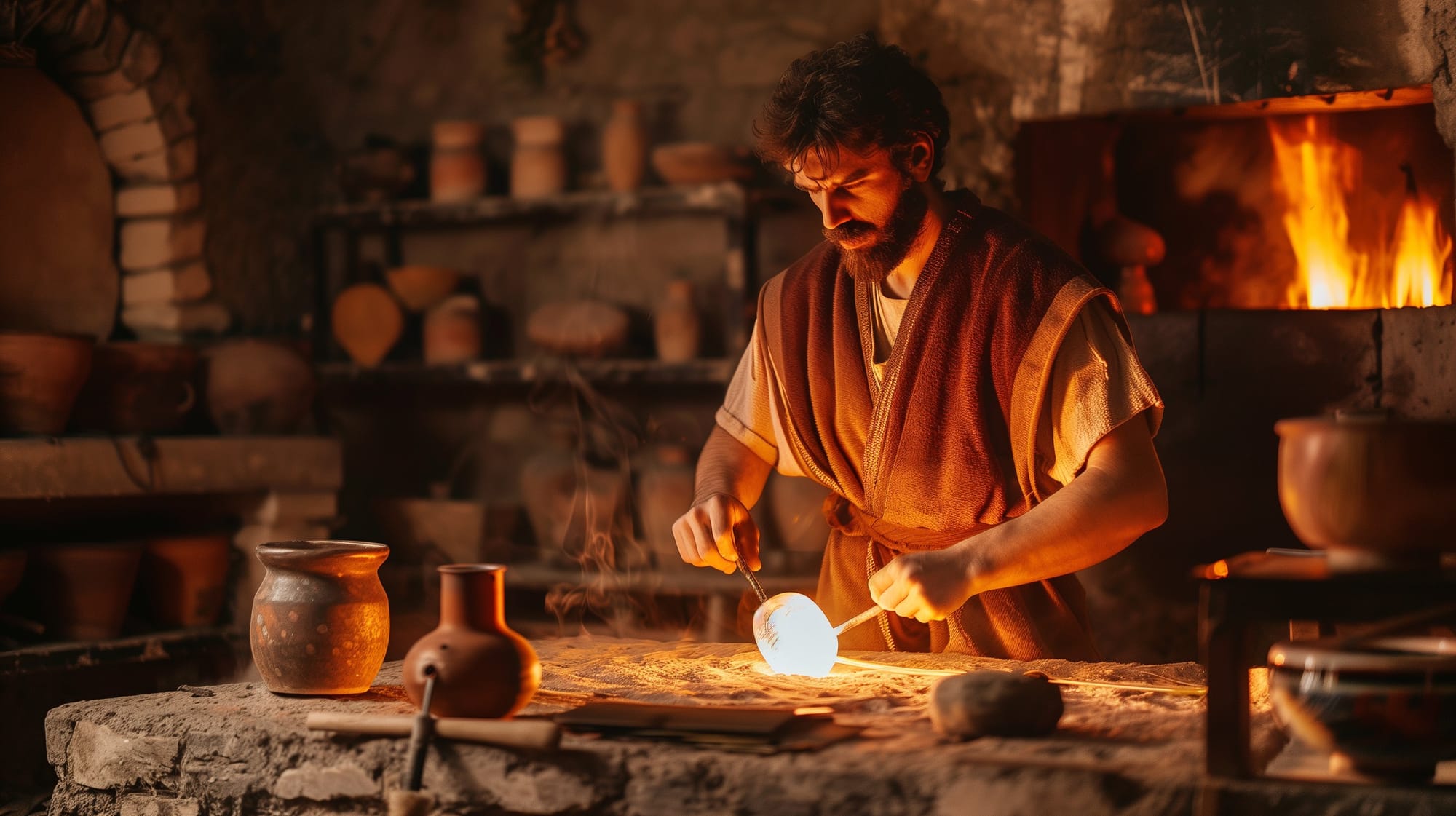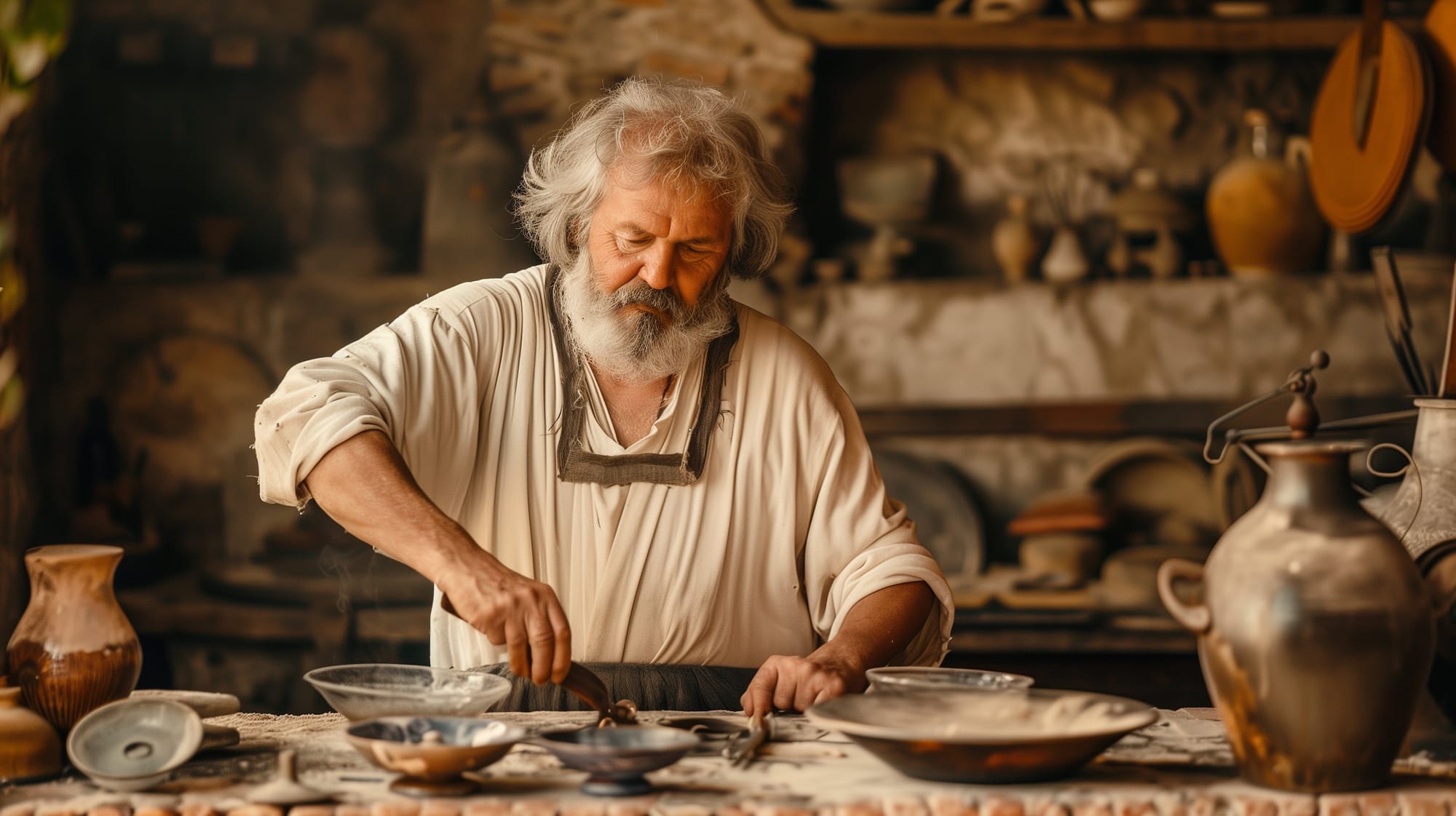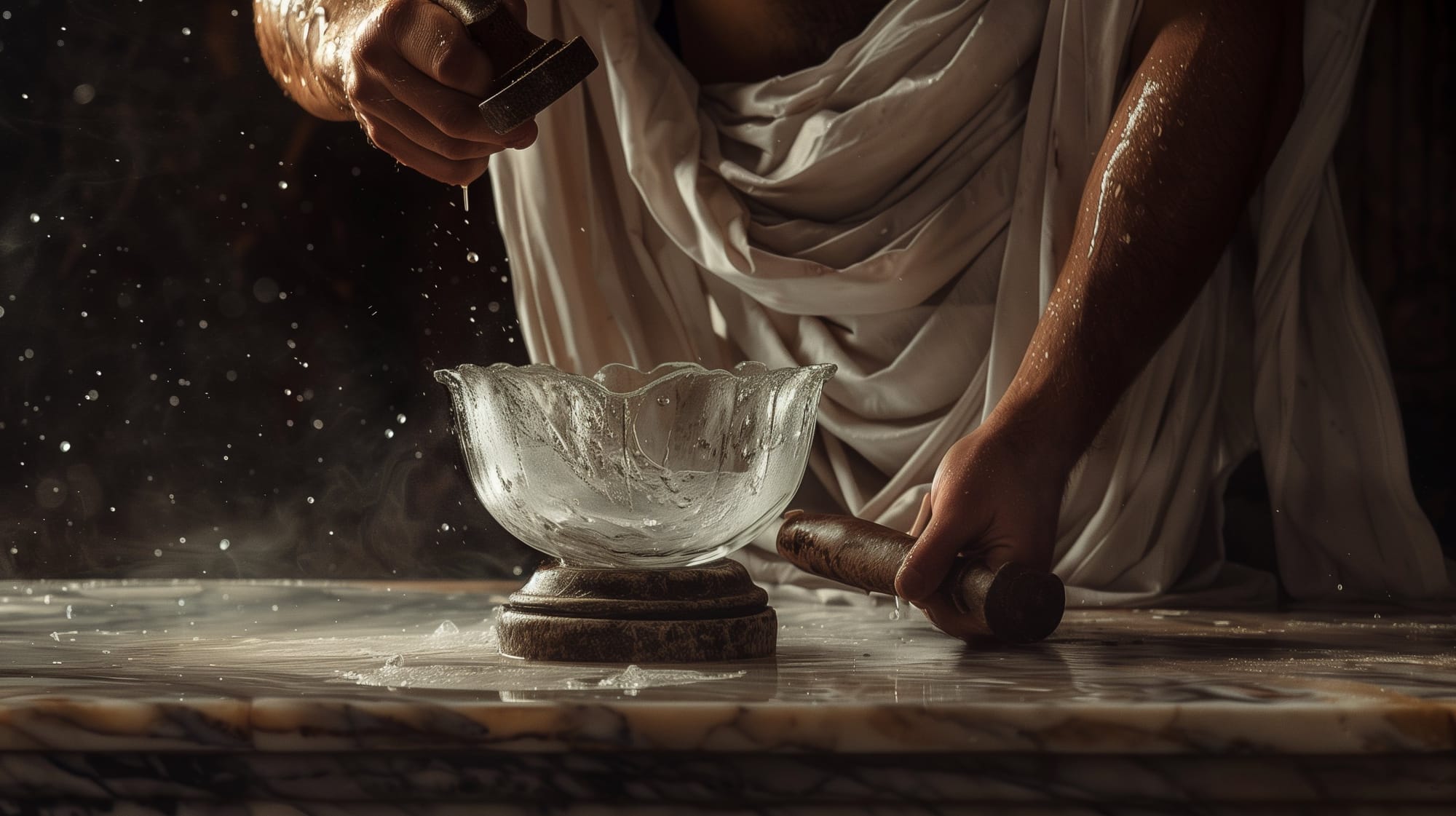Have Romans discovered an indestructible glass?
Unbreakable glass is said to be a legendary invention of the Roman Empire

The story of the unbreakable glass, or 'vitrium flexile', presented to Emperor Tiberius by a Roman glassmaker, remains one of history's most intriguing anecdotes.
The Discovery of Flexible Glass
According to Pliny the Elder and other ancient sources, a Roman artisan created a type of glass so resilient that it could bend without breaking. This invention was demonstrated before Emperor Tiberius, who, rather than rewarding the inventor, chose to execute him to prevent the devaluation of precious metals like gold and silver.
The Roman glassmaker was confident he had impressed Emperor Tiberius and anticipated a reward for his remarkable invention. When the Emperor inquired if anyone else knew the secret of making flexible glass, the craftsman replied that no one did. Instead of a reward, the glassmaker was executed, taking the secret to his grave. Pliny mentions that this drastic action was to prevent the devaluation of gold, as the invention of flexible glass would have caused significant economic implications.

Cassius Dio (57.21.7) recounts the tale of the glassmaker who impressed Tiberius, similar to the story in Petronius' Satyricon (51), where the craftsman approaches an unnamed Caesar. Matthew Paris in Chronica Maiora places this event in 21 AD, although its significance is uncertain. Pliny (36.195) noted the story's frequent retelling, suggesting it was more fiction than fact.
Henrik R. Lassen (1995), from the University of Southern Denmark, Kolding - "The improved product": a philological investigation of a contemporary legend - analyzed the legend, linking it to a period of rapid glassmaking advancements in Rome, marking the shift of glassware from luxury items to more affordable goods for the general populace. Lassen observed that:
"The historical period in which we find the first examples of this legend was, we may safely conclude, a time of relatively fast changes in the technology; subsequently, one must also surmise massive changes in the marketing of glass. About the time of the reign of Tiberius, the status of glassware thus changed from being a luxury, exclusively for the rich, to a product which could be produced at a sufficiently low cost to appeal to the ordinary customer.
Whereas Petronius, and Pliny's accounts appear to display exactly the kind of open-ended attitude to the possibility of further improvement of the novel product that one would expect in such a context, Dio's version reflects a much more unimaginative attitude to glass, most likely a result of well over a hundred years of acquaintance with this material." (Lassen 1995, p. 6)
The concept of flexible glass is often considered a myth both historically and today, appearing in several variations. Pliny the Elder mentioned it in his Natural History but treated it as anecdotal. Petronius' Satyricon includes the oldest version, while Cassius Dio also recounted it without expressing belief. A similar story involves Emperor Vespasian.
“In the reign of Tiberius, it is said, a combination was devised which produced a flexible glass; but the manufactory of the artist was totally destroyed, we are told, in order to prevent the value of copper, silver, and gold, from becoming depreciated. This story, however, was, for a long time, more widely spread than well authenticated. But be it as it may, it is of little consequence; for, in the time of the emperor Nero, there was a process discovered, by which two small glass cups were made, of the kind called "petroti," the price of which was no less than six thousand sesterces!”
Pliny, Naturalis Historia, Chap. 66.

“About this time one of the largest porticos in Rome began to lean to one side and was set upright in a remarkable way by an architect whose name no one knows, because Tiberius, jealous of his wonderful achievement, would not permit it to be entered in the records.
This architect, then, whatever his name may have been, first strengthened the foundations round about, so that they should not collapse, and wrapped all the rest of the structure in fleeces and thick garments, binding it firmly together on all sides by means of ropes; then with the aid of many men and windlasses he raised it back to its original position. At the time Tiberius both admired and envied him; for the former reason he honored him with a present of money, and for the latter he expelled him from the city.
Later the exile approached him to crave pardon, and while doing so purposely let fall a crystal goblet; and though it was bruised in some way or shattered, yet by passing his hands over it he promptly exhibited it whole once more. For this he hoped to obtain pardon, but instead the emperor put him to death.”
Dio, Roman History 27, Chap. 21.
“But there was once a workman who made a glass cup that was unbreakable. So, he was given an audience of the Emperor with his invention; he made Caesar give it back to him and then threw it on the floor. Caesar was as frightened as could be. But the man picked up his cup from the ground: it was dinted like a bronze bowl; then he took a little hammer out of his pocket and made the cup quite sound again without any trouble.
After doing this he thought he had himself seated on the throne of Jupiter, especially when Caesar said to him: 'Does anyone else know how to blow glass like this?' He said no, and then Caesar had him beheaded. Why? Because if his invention were generally known, we would treat gold like dirt. Myself I have a great passion for silver.”
Petronius, Sat. 51
The Mystery Persists
Despite the captivating tales, no physical evidence of flexible glass during the Roman Empire has been found, leading many to consider it a legend. Yet, the story continues to intrigue historians and scientists, who ponder the possible existence and subsequent loss of such an innovative material.
Today, the story of Roman flexible glass is largely met with scepticism, like Pliny's own doubts. However, there are speculations on how it might have been made. One theory suggests that the glassmaker may have used boric acid or borax, which occur naturally. Adding a small amount of boric oxide to the glass mixture could produce a relatively unbreakable material.
Although borax was commonly imported during the Middle Ages, it is possible the glassmaker could have discovered boric acid from steam vents in the Tuscan Maremma by chance, or even combined it with silica; essentially crafting the first borosilicate glass in history. Despite these theories, the recipe for Roman flexible glass, if it ever existed, remains a mystery and a 'lost invention of the Romans'.





About the Roman Empire Times
See all the latest news for the Roman Empire, ancient Roman historical facts, anecdotes from Roman Times and stories from the Empire at romanempiretimes.com. Contact our newsroom to report an update or send your story, photos and videos. Follow RET on Google News, Flipboard and subscribe here to our daily email.
Follow the Roman Empire Times on social media: